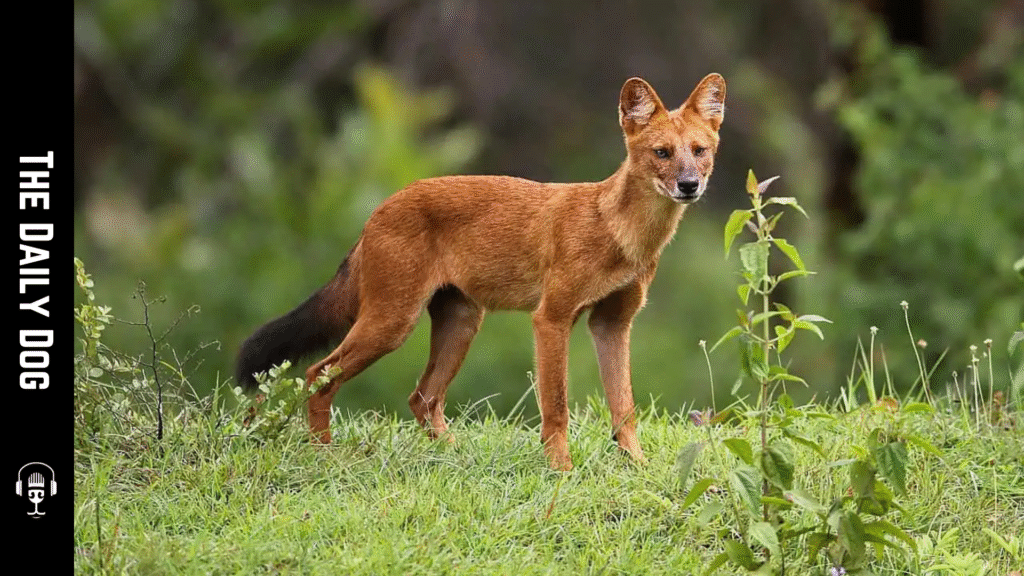The animal kingdom is teeming with fascinating creatures, each uniquely adapted to their environments and roles within their ecosystems. Among these, the Dhole, also known as the Asiatic wild dog or Indian wild dog, stands out as a remarkable and intriguing species. Although often overshadowed by more popular canine species such as wolves and foxes, the Dhole’s distinctive behaviors, social structures, and ecological significance make it a subject worthy of attention. This article explores the origins, physical characteristics, habitat, behavior, conservation status, and the importance of protecting this extraordinary Asian wild dog.
Origins and Taxonomy
The Dhole’s scientific name is Cuon alpinus. It belongs to the Canidae family, which includes domestic dogs, wolves, foxes, and other wild canines. The species is believed to have evolved in Asia, with fossil records dating back thousands of years. Phylogenetic studies suggest that Dholes are closely related to the African wild dogs (Lycaon pictus), though they are distinct species with unique adaptations suited to their Asian habitats.
Historically, Dholes were widespread across South and Southeast Asia. However, habitat loss, prey depletion, and human-wildlife conflict have led to significant population declines, confining their range to specific regions today.
Physical Characteristics
Dholes are medium-sized canines, typically measuring between 20 to 24 inches (50 to 60 cm) at the shoulder and weighing approximately 17 to 35 pounds (8 to 16 kg). Their build is lean and muscular, optimized for endurance and agility during hunts. The coat of a Dhole is short and dense, with a reddish or cinnamon-colored hue, sometimes featuring darker patches or a slightly darker back. Their fur provides camouflage in forested and grassland environments.
One of the most distinctive features of the Dhole is its rounded ears, which are set high on the head, aiding in acute hearing. They have a bushy tail, often with a darker tip, which they use for balance and communication. Their eyes are amber or yellowish, giving them a sharp, alert expression.
Habitat and Geographic Range
Dholes are primarily found across the forests, grasslands, and mountainous regions of South Asia, including India, Sri Lanka, Bangladesh, Nepal, and Bhutan. They also inhabit parts of Southeast Asia, such as Myanmar and Thailand. Historically, their range extended further east, but habitat degradation and hunting have restricted their distribution.
These adaptable animals prefer areas with dense cover and access to abundant prey species like deer, wild boar, and small mammals. They are highly social animals, often forming packs that range from a few individuals to over twenty members, depending on resource availability.
Behavior and Social Structure
The Dhole’s social structure is one of its most remarkable features. They live in close-knit packs led by an alpha pair, with other members typically related to the dominant pair. Pack dynamics are fluid, with cooperative hunting and shared responsibilities in caring for the young.
Dholes are known for their high-pitched, chattering vocalizations, which serve as communication during hunts and social interactions. Their calls can be heard over long distances, helping maintain pack cohesion in dense forests.
Hunting is a highly coordinated activity. Dholes often hunt in packs to take down prey much larger than themselves, such as deer and wild boar. Their endurance and teamwork are key to their hunting success. They are also known to scavenge and sometimes steal kills from other predators.
Reproduction occurs once a year, with the female giving birth to a litter of 4-6 pups after a gestation period of around 60-63 days. Pups are raised collectively by the pack, with older members helping to care for and protect the young.
Diet and Feeding Habits
Dholes are carnivorous predators with a diet primarily consisting of medium to large-sized prey animals. Their hunting strategy involves relentless pursuit and teamwork, often exhausting prey through stamina rather than stealth. They are capable of running at high speeds for extended periods, making them effective hunters in their respective habitats.
Their dietary flexibility allows them to adapt to seasonal changes in prey availability. While deer and wild boar constitute the bulk of their diet, they can also hunt smaller mammals and birds when necessary.
Ecological Role and Importance
As apex or mesopredators, Dholes play a vital role in maintaining the health and balance of their ecosystems. By controlling prey populations, they help prevent overgrazing and promote biodiversity. Their presence indicates a healthy, functioning ecosystem.
Furthermore, Dholes influence the behavior of other predators, such as tigers and leopards, by competing for similar prey resources. Their hunting and scavenging activities contribute to nutrient cycling within their habitats.
Conservation Status and Threats
The International Union for Conservation of Nature (IUCN) classifies the Dhole as “Endangered.” Their population has declined by over 50% in the past few decades, primarily due to habitat fragmentation, loss of prey, and human-wildlife conflicts.
Major threats facing Dholes include:
- Habitat Destruction: Deforestation for agriculture, logging, and infrastructure development reduces available habitat and prey populations.
- Prey Depletion: Overhunting of prey species diminishes food sources, leading to starvation and decreased reproductive success.
- Persecution and Hunting: Dholes are sometimes killed due to their perceived threat to livestock or because of retaliation against attacks.
- Disease Transmission: Encroachments and interactions with domestic dogs can introduce diseases, further threatening their populations.
Despite these challenges, some protected areas in India, Nepal, and Southeast Asia provide refuge for Dholes. Conservation efforts include habitat preservation, anti-poaching measures, and community engagement initiatives aimed at reducing human-wildlife conflicts.
Efforts for Dhole Conservation
Recognizing the ecological importance of Dholes, various organizations and governments have initiated measures to safeguard their populations. These include establishing protected areas, conducting scientific research, and raising awareness among local communities.
In India, for example, national parks and wildlife sanctuaries such as Bandipur, Nagarhole, and Kaziranga serve as critical habitats. Conservation programs also focus on prey abundance and reducing conflicts with humans.
Community-based conservation is gaining prominence, emphasizing coexistence and sustainable practices. Education campaigns aim to dispel myths and foster appreciation for this wild canine species.
How to Support Dhole Preservation
Individuals interested in supporting Dhole conservation can contribute in several ways:
- Supporting Wildlife Organizations: Donations and volunteering with organizations dedicated to wildlife protection can make a tangible difference.
- Promoting Eco-Tourism: Visiting protected areas responsibly supports local economies and encourages conservation efforts.
- Raising Awareness: Sharing information about Dholes and their ecological importance helps foster public support.
- Reducing Habitat Destruction: Advocating for sustainable land-use practices and responsible forestry helps protect their habitats.
Conclusion
The Dhole is an extraordinary member of the canine family, distinguished by its social behavior, adaptability, and ecological role within Asian ecosystems. As an endangered species, it faces numerous threats from human activities, emphasizing the need for targeted conservation efforts. Protecting the Dhole not only preserves a unique and fascinating species but also maintains the health and diversity of the ecosystems they inhabit.
By understanding and supporting the conservation of Dholes, we contribute to the broader goal of preserving the rich biodiversity of our planet. Their survival depends on collective actions rooted in awareness, habitat protection, and sustainable coexistence. The wild canines of Asia, including the Dhole, are invaluable treasures that deserve our attention and care for generations to come.
We offer a FREE Strategy Call.
Click on the graphic to learn more
Read More


The American Eskimo Dog: A Joyful Companion with a Distinctive Flair








